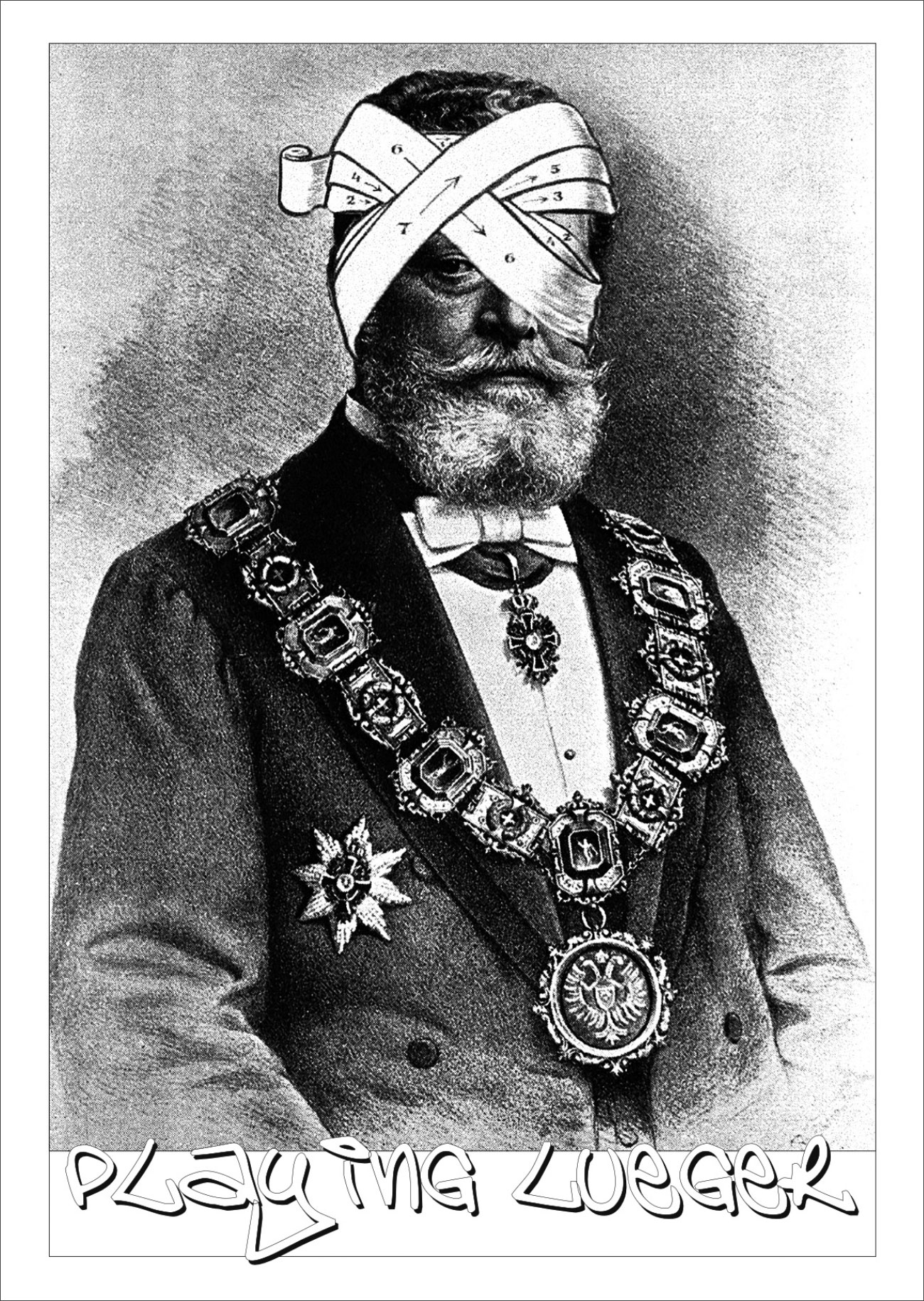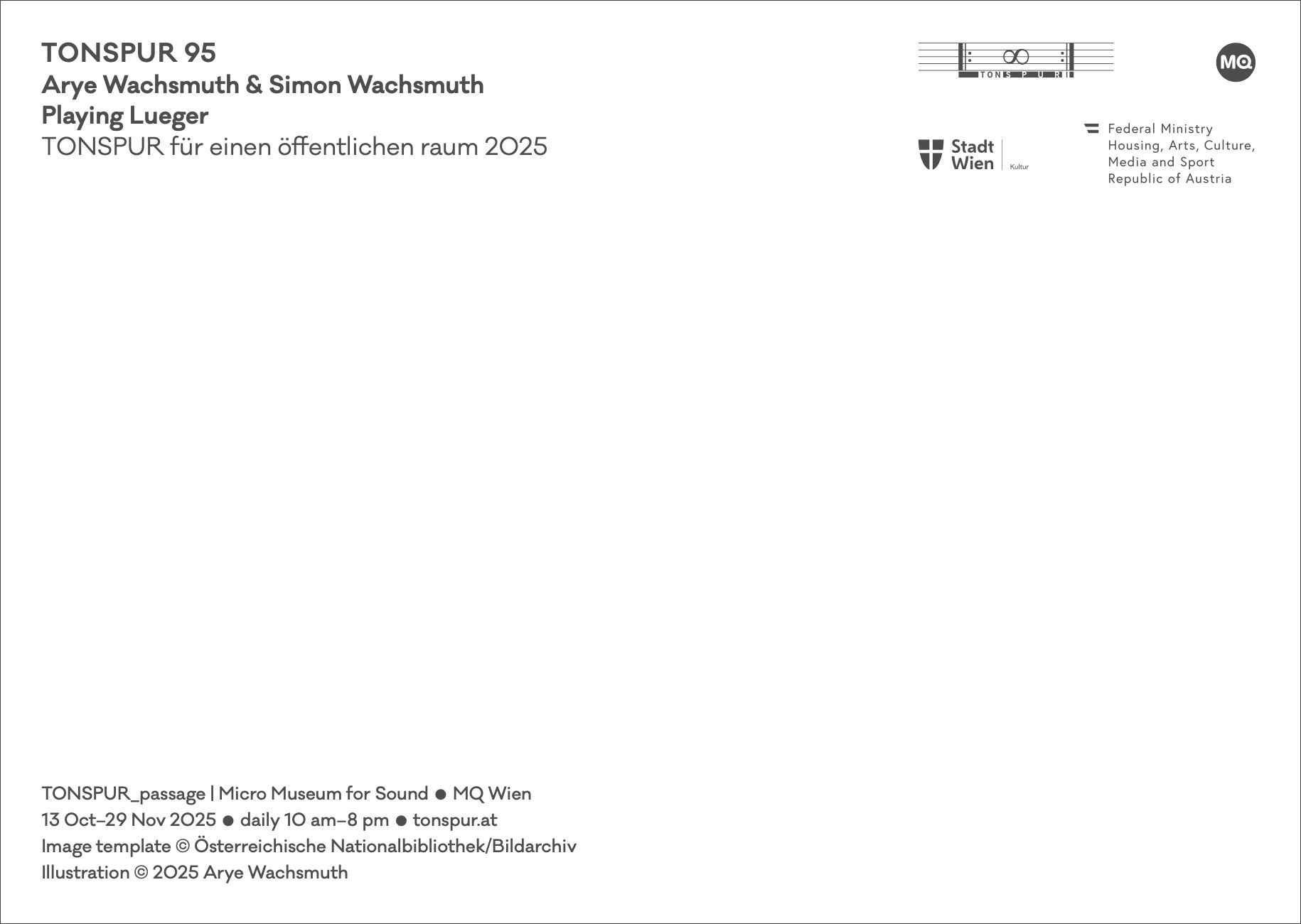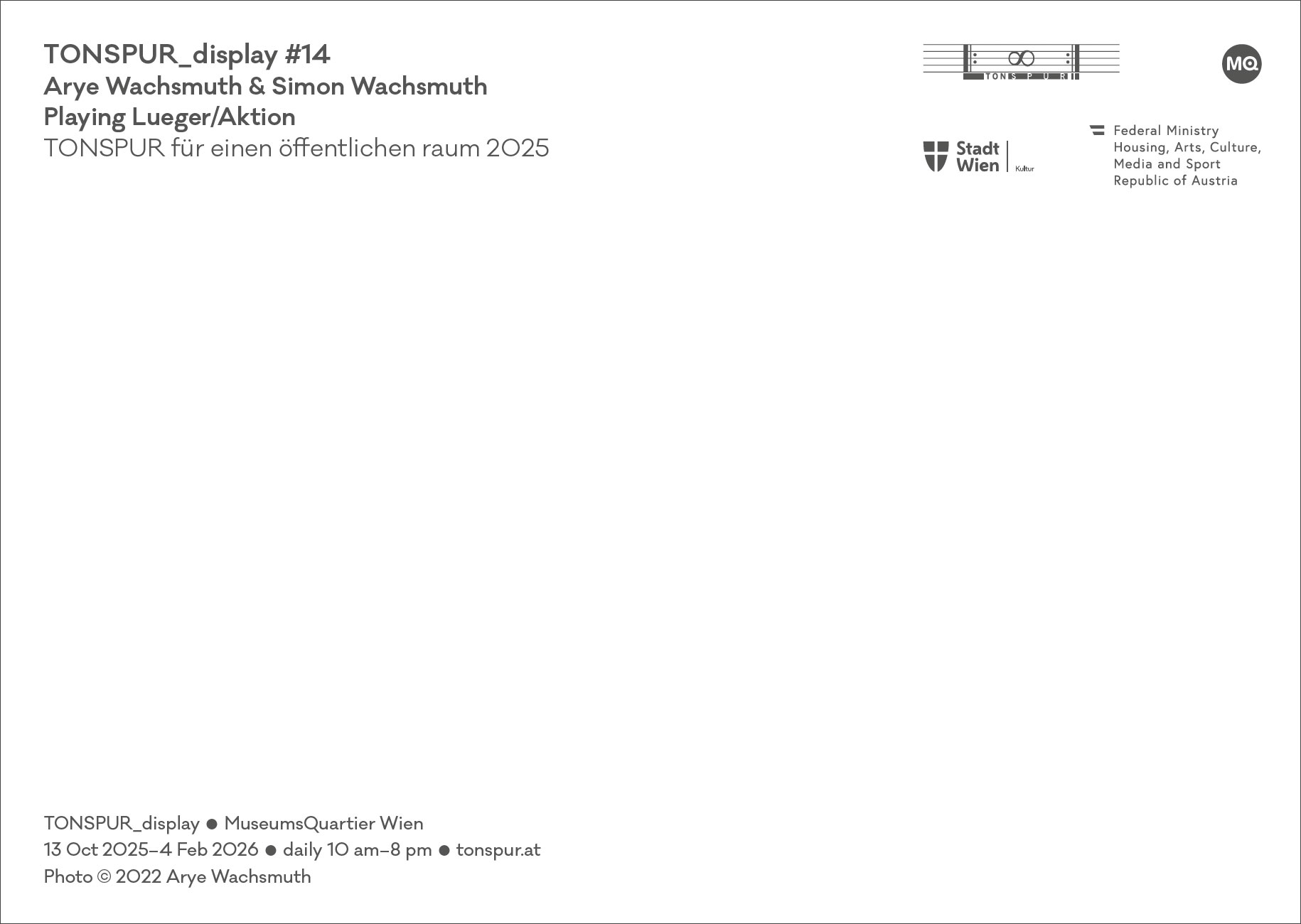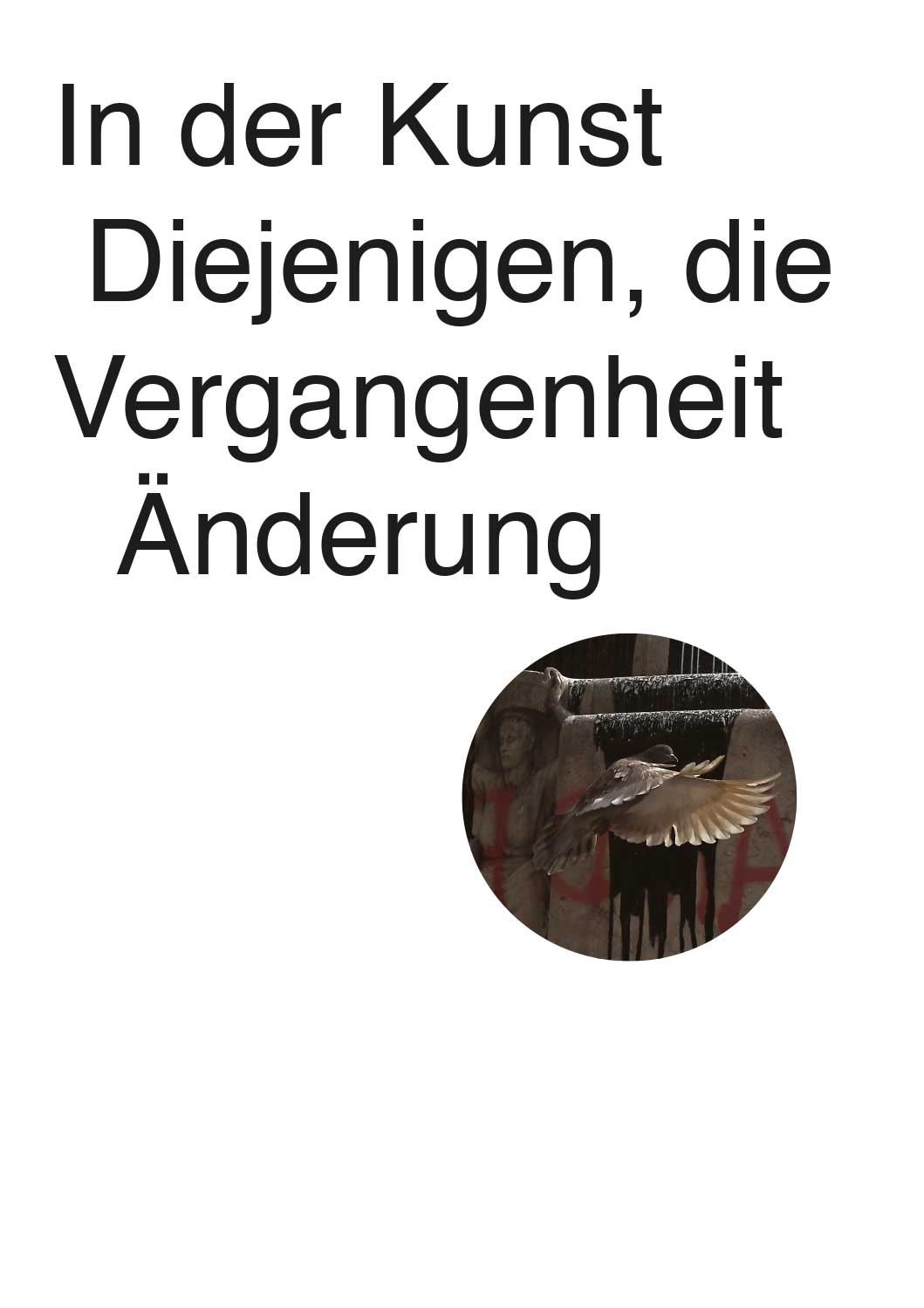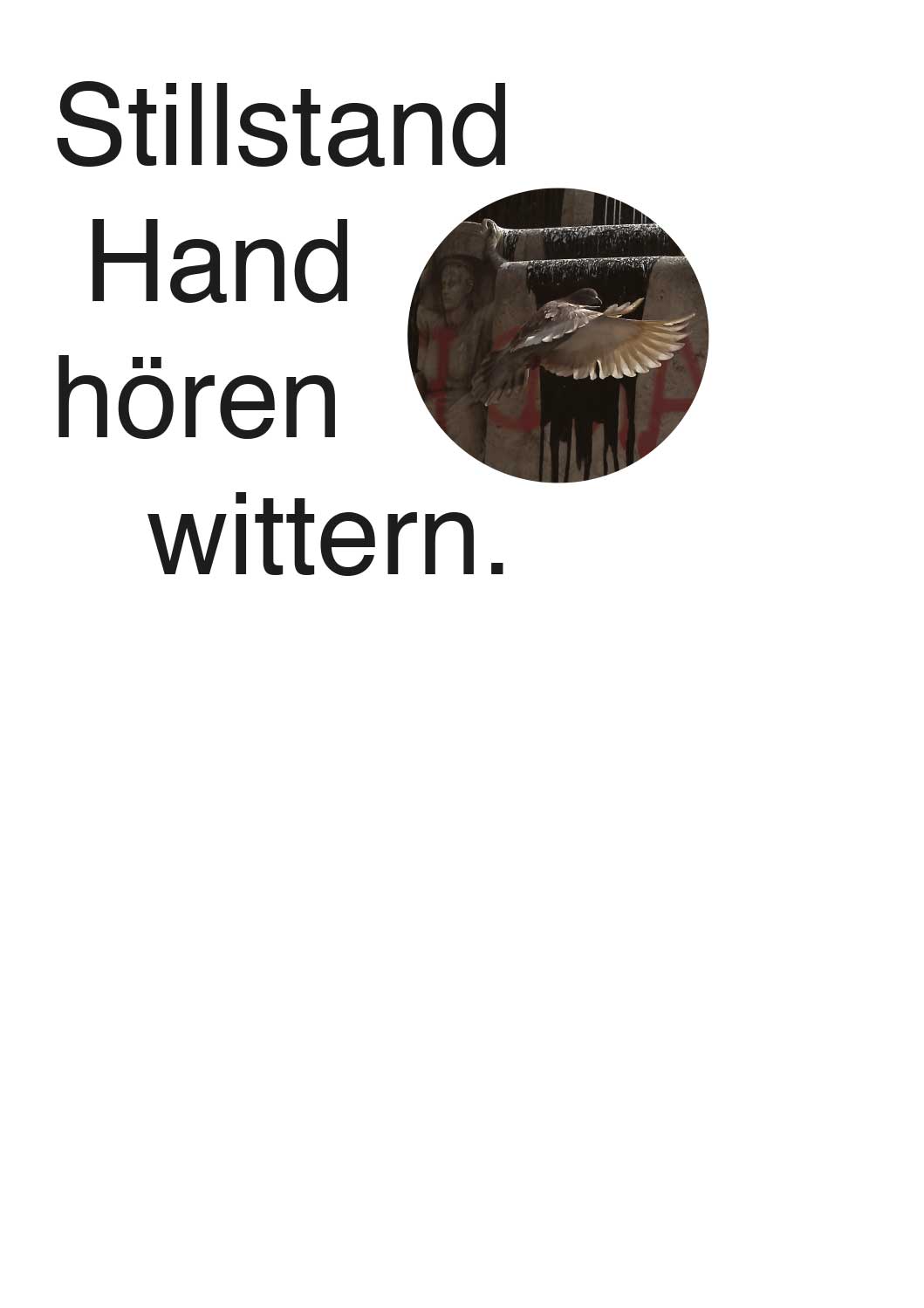Arye Wachsmuth & Simon Wachsmuth
Playing Lueger/Aktion, 2025 • TONSPUR 95
Playing Lueger
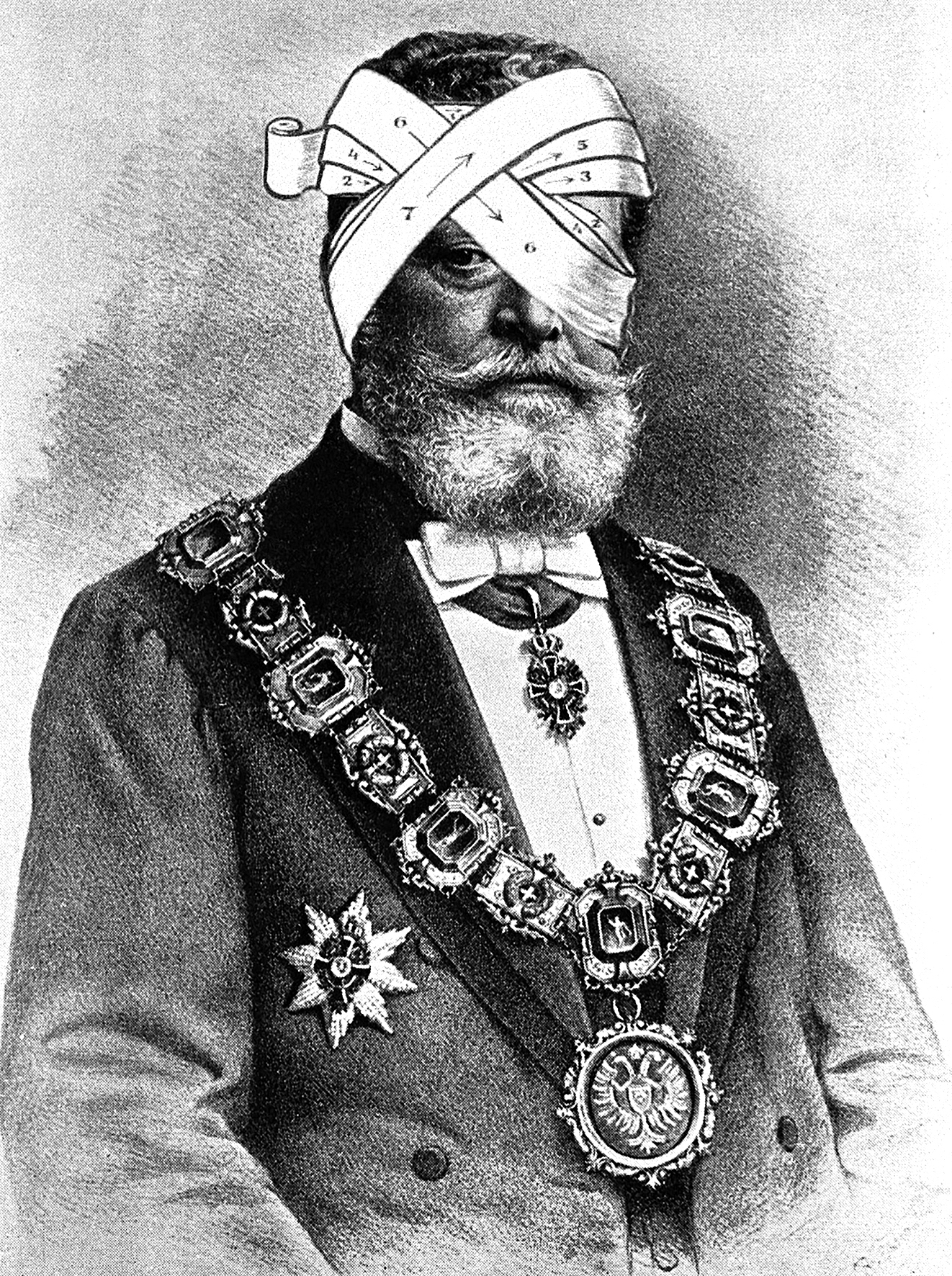
Playing Lueger
2025
© Bildrecht, Wien 2025
2025 • Stereomix
Playing Lueger
What does an object sound like when it is activated acoustically? What comes back as an echo? Do the sounds and the resonance begin a dialogue between a sculpture and its setting? Playing Lueger engages with these questions.
Monuments are part of our everyday lives as places of commemoration, of remembrance and of protest. They store history and pass it on to generations to come. How we perceive, interpret and evaluate them today, however, lies in our own responsibility.
The philosopher Henri Lefebvre saw monuments as dialectical objects — both collective repositories and carriers of ideological significance. In our work, the monument in Vienna’s 1st district, The Inner City, to the anti-Semitic mayor of Vienna Karl Lueger becomes a point of departure for talking about memory and responsibility — and about how cultural heritage can be ‘heard’ in new ways.
We transform the monument into an instrument. Using specially developed mallets, we beat on the bronze sculpture — like a percussive instrument. This gesture has a double meaning: it is associated with violence, while at the same time being prerequisite for making the sounds, the vibrations, and hearing. Bells and gongs are instruments that serve both as signals and for meditation. Playing Lueger reflects the tension between destruction and renewal, between physical action and symbolic sounds. The noise becomes a metaphor for social resonance — for speech and counter-speech, for asking questions and responding.
The acoustic activation initiates a sound installation in public space, engaging with Vienna’s rich musical history as part of its conceptual framework.
While Mahler and Schönberg were searching for new forms of expression, Lueger’s populist and anti-Semitic politics was shaping the cultural climate of the city.
A central figure of this era was Elsa Bienenfeld, a musicologist, critic and pioneer of New Music. She stood for openness and renewal at a time when anti-Semitism was hostile towards the avant-garde — and she was murdered in the Maly Trostinec extermination camp. Her last place of residence, a collective apartment for Jews, was only a few meters away from Dr. Karl Lueger Platz.
A quotation from Bienenfeld has been integrated into the sound piece. It addresses the relationship between tradition and renewal as a poetic call for differentiation instead of exclusion.
Playing Lueger transforms the monument — a symbol of a troubled past — into an open sonic structure. The monument becomes a resonating body that makes history audible, and asks: How do we deal with the echoes of our own past today?
Arye Wachsmuth, born in Hamburg, Germany in 1962, lives and works in Vienna.
Simon Wachsmuth, born in Hamburg in 1964, lives and works in Berlin, Germany.
Playing Lueger
8-channel soundwork, 7-part series of A1 images
duration 17:41”
concept, recordings, composition, A1 images Arye Wachsmuth & Simon Wachsmuth
installation set up Peter Szely
production TONSPUR Kunstverein Wien
artistic director Georg Weckwerth
special thanks Johanna Zechner, historian and curator at the Austrian Museum of Folk Life and Folk Art.
Opening Sun Oct 11 2025, 5 pm
TONSPUR_passage | Micro Museum for Sound
13.10.–29.10.2025
daily 10–20 h • 20:00 min
and
TONSPUR_display
Showroom TONSPUR Kunstverein Wien
Oct 13 2025–Feb 4 2026
daily 10–20h
Link: TONSPUR_display 14 • Playing Lueger/Aktion
